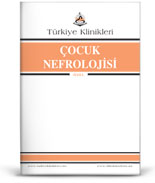Geçmişte kullanılmış olan 'akut böbrek yetmezliği' terimi yerine günümüzde 'akut böbrek zedelenmesi' kullanılmaktadır. Bu terim değişikliğinin asıl amacı tanımı standart hâle getirmektir. Çünkü böbrek fonksiyon bozukluğunun altında yatan durum ve mekanizmalar, oldukça çeşitlidir. 2000'li yılların başına kadar, ABZ için yayınlanmış 30'dan fazla tanım bulunmaktadır. Dolayısıyla standardizasyonun olmaması, hem sorunun büyüklüğünü belirlemeyi hem de konuyla ilgili farklı çalışmalar arasında karşılaştırmayı neredeyse imkânsız hâle getirmiştir. Bu terminoloji ile temel bilim çalışmalarından elde edilen bilgilerin iyi değerlendirilmesi, etkilenen hastaların ve altta yatan nedenlerin/mekanizmaların daha kesin bir şekilde tanımlanarak, ABZ'nin klinik çalışmalarına katkıda bulunulması amaçlanmaktadır.
Aslında, ABZ terimindeki en önemli/anlamlı sözcük "zedelenme/yaralanma"dır. Başlangıçta öncelikle böbrek tübüllerindeki hücre hasarı akla gelse de böbreğin diğer bölümlerinde de hücresel hasarın olduğu bilinmektedir. Bu zedelenmenin derecesine bağlı olarak da serum kreatinininde hafif ama sürekli bir yükselmeden anürik böbrek yetmezliğine kadar değişebilen klinik ve laboratuvar bulguları ortaya çıkmaktadır. Bazı zedelenmeler hızlı ve tamamen geri dönüşümlü iken bazıları böbrek yetmezliği ile sonuçlanabilmektedir.
ABZ, ekonomik durumdan bağımsız olarak tüm ülkelerde yaygın olarak görülmektedir. Gelişmiş ülkelerde yoğun bakım hastalarının yaklaşık %27'sinde, yoğun bakım dışında hastanede yatan çocukların ise yaklaşık %5'inde ABZ geliştiği bildirilmektedir. Birçok hastalığın tanı ve tedavisindeki teknolojik gelişmeler ve yoğun bakım koşullarının iyileşmesine paralel olarak ABZ'nin nedenleri de sistemik hastalıklar, çoklu komorbid durumlar ve nefrotoksik ilaç kullanımı şeklinde değişiklik göstermeye başlamıştır. Maalesef çocukluk çağında hâlen mortalite ve morbiditesi yüksek olan sorunlardan biridir.
Bu kitapta, ABZ'nin patofizyolojisinden başlayarak tanımı ve sınıflandırmadaki zorluklar, epidemiyoloji ve etiyolojisi, klinik ve laboratuvar bulguları, biyobelirteçler ve önemi, önlenmesi ve tedavisi, riskli hasta gruplarında yönetimi, kısa ve uzun süreli takibinde karşılaşılan sorunlara ek olarak, kullanımında her zaman böbreklerin hedef organ olabileceği dikkate alınarak çeşitli ilaç ve destek ürünleri ilişkili ABZ ve 2019 yılından beri bütün dünyayı etkileyen koronavirüs hastalığı-2019 (COVID-19) pandemisi ve ABZ ayrı başlıklar altında ve güncel bilgiler ışığında tartışılacaktır.
Kitabın bütün hekimlerimiz için yararlı bir rehber olacağına inanıyor, hazırlanmasında emeği geçen meslektaşlarıma teşekkür ediyor, COVID-19 pandemi sürecinde yılmadan çalışan ve bu uğurda canlarını feda etmiş değerli meslektaşlarımı saygı, minnet ve rahmetle anıyorum.
Prof. Dr. Ayşe BALAT
Editör
Instead of the term "acute kidney failure" used in the past, "acute kidney injury" is used at the present time. Since the conditions and mechanisms underlying kidney dysfunction are quite diverse, the main purpose of this term change is to standardize the definition. Until the early 2000s, there were more than 30 published definitions for AKI. Therefore, the lack of standardization has made it almost impossible both to determine the size of the problem and to compare the results between different studies on AKI. With this terminology, it has been aimed to contribute to the clinical studies of AKI by making the best use of the information obtained from basic science studies, defining the affected patients and underlying causes/mechanisms more precisely.
In fact, the most important/meaningful word in the term AKI is "injury". Although cell damage in the kidney tubules is primarily considered, it has been known that cellular damage also occurs in other compartments of the kidney. Depending on the degree of this injury, clinical and laboratory findings range from a mild but continuous increase in serum creatinine to anuric kidney failure. While some injuries are rapidly and completely reversible, others may result in kidney failure.
AKI is common in all countries, regardless of the economic situation. It has been reported that AKI develops in approximately 27% of intensive care patients and in approximately 5% of hospitalized children outside of the intensive care unit in developed countries. In parallel with the technological developments in the diagnosis and treatment of many diseases and the improvement of intensive care conditions, the causes of AKI have begun to change in the form of systemic diseases, multiple comorbid conditions, and nephrotoxic drug use. Unfortunately, it is still one of the problems with high mortality and morbidity in childhood.
In this book, starting from the pathophysiology of AKI, difficulties in definition and classification, epidemiology and etiology, clinical and laboratory findings, biomarkers and their importance, prevention, and treatment, management of AKI in risky patient groups, short and long-term follow-up, besides, the problems encountered in the use of various drugs and support products that kidney is always one of the target organs, and AKI in the coronavirus disease-2019 (COVID-19) pandemic, which has been affecting the whole world since 2019, will be discussed under separate headings and in the light of current knowledge.
I believe that this book will be a useful guide for all physicians. I thank my colleagues who contributed to its preparation, and I commemorate my valuable colleagues who worked with great effort during the COVID-19 pandemic and lost their lives, with respect, gratitude, and mercy.
Prof. Dr. Ayşe BALAT
Editor







.: Process List